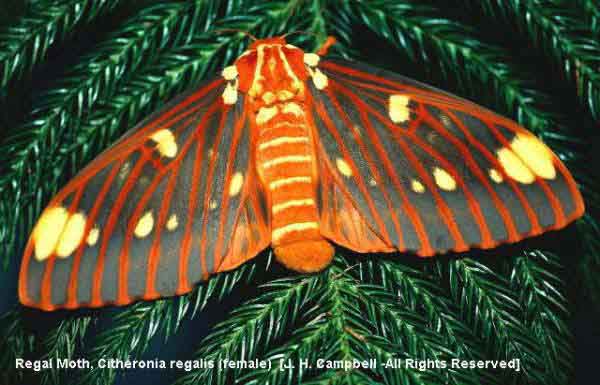CITHERONIA REGALIS MOTH
(FABRICIUS, 1793)

Citheronia regalis moth courtesy of John Campbell.
This site has been created by
Bill Oehlke at oehlkew@islandtelecom.com
Comments, suggestions and/or additional information are welcomed by Bill.
TAXONOMY:Superfamily: Bombycoidea, Latreille, 1802 |
"WhatAWonderfulWorld" |





